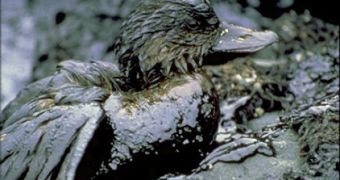A team of Japanese chemists led by Kazuki Sada of Kyushu University have developed a new gel that can increase its volume 500 times when coming in contact with solvents.
A gel is a colloidal system in which a porous network of interconnected nanoparticles spans the volume of a liquid medium. In general, gels are apparently solid, jelly-like materials. Both by weight and volume, gels are mostly liquid in composition and thus exhibit densities similar to liquids; however they have the structural coherence of a solid. They become fluid when agitated, but resolidify when resting.
A successor of polyelectrolyte gels which expand when in contact with water (like those found in diapers) the new gel-like substance can increase its volume in contact with solvents and absorb them, thus being considered a breakthrough for absorbing dangerous industrial spills.
Unlike polyelectrolyte gels, useless in tackling organic, or carbon-based, solvents (because of their structure typically collapses due to the aggregation of charged atoms in such compounds, the only exceptions being "polar" solvents that are particularly water-loving), the new product has found a way to bond to solvent molecules found in most solvents.
The researchers found a way around the usual problems of other PE gels by adding tetra-alkylammonium tetraphenylborate, a substance that attracts less-polar solvents.
For now, the gel has been successfully tested on carbon tetrachloride, toluene, tetrahydrofuran and other common industrial solvents, but the real breakthrough would be the development of further applications, based on the properties of the new find, that could one day assist in removing industrial pollutants and maybe even oil spills.
These are considered serious health hazards and are usually found as spills or leaks that reach the underlying soil. Since solvents readily migrate substantial distances, the creation of widespread soil contamination is not uncommon; there may be about 5000 sites worldwide that have major subsurface solvent contamination.

 14 DAY TRIAL //
14 DAY TRIAL //